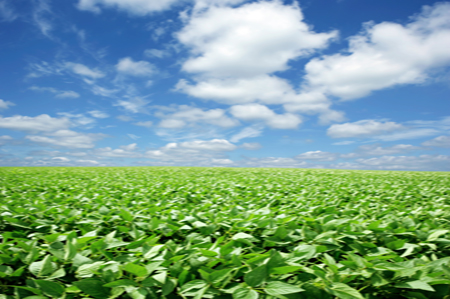 (Agrimoney) – Paraguay’s soybean production will set a fresh record next season, lifted by a jump in second crop plantings to 1m acres – in what would “appear to defy agronomic common sense”.
(Agrimoney) – Paraguay’s soybean production will set a fresh record next season, lifted by a jump in second crop plantings to 1m acres – in what would “appear to defy agronomic common sense”.
The US Department of Agriculture’s Buenos Aires bureau, in its first forecast for the Paraguayan soybean harvest in 2015-16, ie to be harvested next year, pegged output at 9.2m tonnes.
That would beat by 700,000 tonnes the current record, expected for the current season, and underline Paraguay’s status as South America’s third-ranked soybean producer – albeit a distant third behind Brazil and Argentina.
And it comes despite ideas of some resistance to further expansion of soybean area, with weaker prices of the oilseed but reviving cattle producer margins reducing the appeal of ploughing up pasture for cropland.
‘Maxed out’
“Productive land appears maxed out for the main [soybean] crop – over the past year the incentive to convert pasture into soybeans has dissipated, as soybean prices have decreased and beef prices have gone up,” the USDA bureau said.
“The second crop soybean crop is where the growth [in plantings] is projected to occur.”
Indeed, sowings of the second crop, termed the “zafrina” crop in Paraguay – and which was only first sown in 2015-16 – will rise by 250,000 hectares to reach 1m hectares.
This will account for nearly 40% of total soybean sowings.
‘Risky practice’
The practice of planting back-to-back soybean crops would also “appear to defy agronomic common sense”, the bureau warned, with a lack of rotation in theory encouraging pests.
Indeed, in Brazil, the main soybean-producing state, Mato Grosso, is from 2015-16 extending the start of a soybean-free period from June 1 to May 1, essentially ruling out second-crop soybeans, over disease and pest concerns.
Mato Grosso farmers cannot start plantings of main crop until mid-September.
However, in Paraguay, which does not operate any calendar restrictions on plantings, “so far, farmers have had good fortune with the [zafrina] crop”, the bureau said.
“Pest pressure has not been very significant, with no reported cases of white fly.
“Liberal import policies have allowed farmers to expeditiously import needed (and sometimes unconventional) pesticides and fungicides to treat diseases quickly, benefiting the risky practice.”
Export prospects
The growth in Paraguayan soybean production will not, however, be reflected in rising exports of the oilseed, with the country processing increasing amounts of the crop domestically, thanks to investments in new crushing plants.
These include smaller operations, as well as two larger sites which reached full capacity last year: an Archer Daniels Midland plant with capacity for 1.2m tonnes a year; and a 1.1m-tonne site back by Bunge and Louis Dreyfus.
Paraguay’s exports of soybeans themselves will hold at 4.2m tonnes next season, well below the 2012-13 record of 5.52m tonnes, the bureau said.
Exports of soyoil will rise by 85,000 tonnes to a record 800,000 tonnes, and of soymeal by 400,000 tonnes to a record 3.2m tonnes.




